sticky
Navigation
Install the app
How to install the app on iOS
Follow along with the video below to see how to install our site as a web app on your home screen.
Note: This feature may not be available in some browsers.
More options
You are using an out of date browser. It may not display this or other websites correctly.
You should upgrade or use an alternative browser.
You should upgrade or use an alternative browser.
Compiled 80 series suspension component spec thread... shocks, coils & more. (9 Viewers)
This site may earn a commission from merchant affiliate
links, including eBay, Amazon, Skimlinks, and others.
More options
Who Replied?Thank you ! Great info!
Sticky indeed
- Thread starter
- #24
Hey all, I'm not up on all shock research, so I need your help. There is a lot of shock options out there.... so if you have done thorough research on your favorite shocks please go ahead and post the specs up and some pictures even and then I'll get shocks post updated in the top.
And again if you see any information above that is wrong go ahead and please PM me cuz I don't want to be putting out any incorrect information thank you.
Thank you for your time.
Gary
And again if you see any information above that is wrong go ahead and please PM me cuz I don't want to be putting out any incorrect information thank you.
Thank you for your time.
Gary
Great work very useful info. Thanks
Slinky Long Travel
Dist. through RedLine LC & Endless Horizon Outfitters
75mm lift
Front 7498 160/260# ~ approx 24"
Rear 7501 160/270# ~ approx 21"
HD rear 7511 160/320# ~ 21"
The shocks for these coils are an AutoCraft Slinky specified Icon 2.0 IFP
Front 16.85" - 28.17"
Rear 16.85" - 27.42"
50mm lift
Specs????

Above is the 7498 Int fronts & below are the Int. 7501 & HD 7511.


On rig under weight
View attachment 1584674
Slinky vs OME 850J
View attachment 1584675
@GW Nugget What is the net lift on a unloaded 80? I may have some accident impact side spring damage and if so that will mean new coils.
You pic looks like more than 3”. Although given the backorder, prolly doesn’t matter.
Last edited:
Awesome work Gary, thanks!
Hey @Nay don't forget my rig has a 1" body lift.
It sits approx @24" on all corners so 23" for just the suspension.
Thanks - I’m 24.5 at the corners pre-accident (no flares) so that 4” Dobinson dual rate would be awfully close to a direct replacement.
Sorry for the thread drift, but worth noting that’s the only 4” dual rate coil on the market, which is a significant data point.
Data here for the Iron Man Foam Cell Pro http://cairnstocape4x4.com/files/9814/1211/8058/foamcell-brochure.pdf
- Thread starter
- #31
@baldilocks is running the 3.5" Tapered plus 1" spacer. Center of hub to bottom of fender is approx 25"Thanks - I’m 24.5 at the corners pre-accident (no flares) so that 4” Dobinson dual rate would be awfully close to a direct replacement.
Sorry for the thread drift, but worth noting that’s the only 4” dual rate coil on the market, which is a significant data point.
Last edited:
With the Dobinson taperd 3.5” coil and a 1” spacer, my hub to naked fender lip is 25.25”-25.5” (its that bend around the tire).Thanks - I’m 24.5 at the corners pre-accident (no flares) so that 4” Dobinson dual rate would be awfully close to a direct replacement.
Sorry for the thread drift, but worth noting that’s the only 4” dual rate coil on the market, which is a significant data point.
Dobinson does not sell a coil marketed as “dual rate”. Their “tapered” front coil could probably be classified as dual rate I suppose.
Their other option, which I demo’d and liked also, is their 4” Flexi coil which also comes in 3”.
I run the spacer up front in an attempt to match up with the Slee HD progressives i run in the rear.
According to Dobinson rep David Otero, dobinsons are high quality springs that will provide many years of service without sagging. Time will tell.
Anybody have free height length specs on the 4” rear flexi?
This coil looks to be very close to the FOR Gen II that I run that are about 20” free height in the rear.
I run eye adapters and use a 10” travel Fox 2.0 remote res shock that is 26.10 extended, so adding about an inch for the eye adapter (only the upper end gets converted) that’s about 27” total extended length, or more or less the Dobinson 4” lift shock.
I don’t need the tapered coil for more droop as my design is set up specifically to not add a lot of travel the front can’t use.
@baldilocks I’m not much concerned with the marketing - if the coil has a dead wind stack, it’s a dual rate coil. If the tail is tapered, the the tapered part is progressive as diameter decreases.
As to whether one does something the other does not outside of total free length, I’ve never seen a compelling argument. It’s just been that the taper by it’s progressive nature has a longer transition zone and the coil may be subjected to less stress and it may provide more of an unloaded to fully loaded sweet spot.
But 80’s are heavy and I’m not sure about the real world differences - as you noted above, you tried both without a meaningful distinction and it’s about netting out suspension height.
In my experience, the front is really easy to dial on a dual rate coil, but the rear less so. I’ve always felt my FOR Gen II could have been just a bit stiffer in the rear. It was really good and perhaps a price to pay for the design, but that’s why I’m going to do the swap on that end and see.
This coil looks to be very close to the FOR Gen II that I run that are about 20” free height in the rear.
I run eye adapters and use a 10” travel Fox 2.0 remote res shock that is 26.10 extended, so adding about an inch for the eye adapter (only the upper end gets converted) that’s about 27” total extended length, or more or less the Dobinson 4” lift shock.
I don’t need the tapered coil for more droop as my design is set up specifically to not add a lot of travel the front can’t use.
@baldilocks I’m not much concerned with the marketing - if the coil has a dead wind stack, it’s a dual rate coil. If the tail is tapered, the the tapered part is progressive as diameter decreases.
As to whether one does something the other does not outside of total free length, I’ve never seen a compelling argument. It’s just been that the taper by it’s progressive nature has a longer transition zone and the coil may be subjected to less stress and it may provide more of an unloaded to fully loaded sweet spot.
But 80’s are heavy and I’m not sure about the real world differences - as you noted above, you tried both without a meaningful distinction and it’s about netting out suspension height.
In my experience, the front is really easy to dial on a dual rate coil, but the rear less so. I’ve always felt my FOR Gen II could have been just a bit stiffer in the rear. It was really good and perhaps a price to pay for the design, but that’s why I’m going to do the swap on that end and see.
Last edited:
Box Rocket
SILVER Star
@Nay, you would possibly be interested in the 50mm Slinky Intermediate coils. IIRC @woody has these on his 80 that is set up similarly to yours in terms of weight. He seems very pleased with it. You might pick his brain. I know my truck is heavier but the 75mm HD Slinkys have been awesome for me. I wouldn't want any lighter spring rate frankly. Load capacity is far better than OME heavies. I don't have experience with your FOR springs to be able to compare load capacity.
Box Rocket
SILVER Star
Some additional shock info on the Stage 1 Slinky shocks. As has been mentioned earlier, these are a 2.0 IFP shock. Full 12" travel and when paired with Slinky coils you can use every bit of the shock. Compared to the Slinky Stage 4 shocks which have 8 dampening settings, the Stage 1 shocks are the equivalent of a 4 setting on the Stage 4s.
Slinky Stage1 (front) vs OME L shock

Stage1 Slinky at full droop

Stage 1 Slinky (rear) vs OME L (old style)

Stage1 stone guards for rear shocks

Stage1 Slinky 75mm HD at ride height. On my truck this measured out very close to a true 3" lift.


Slinky Stage1 (front) vs OME L shock
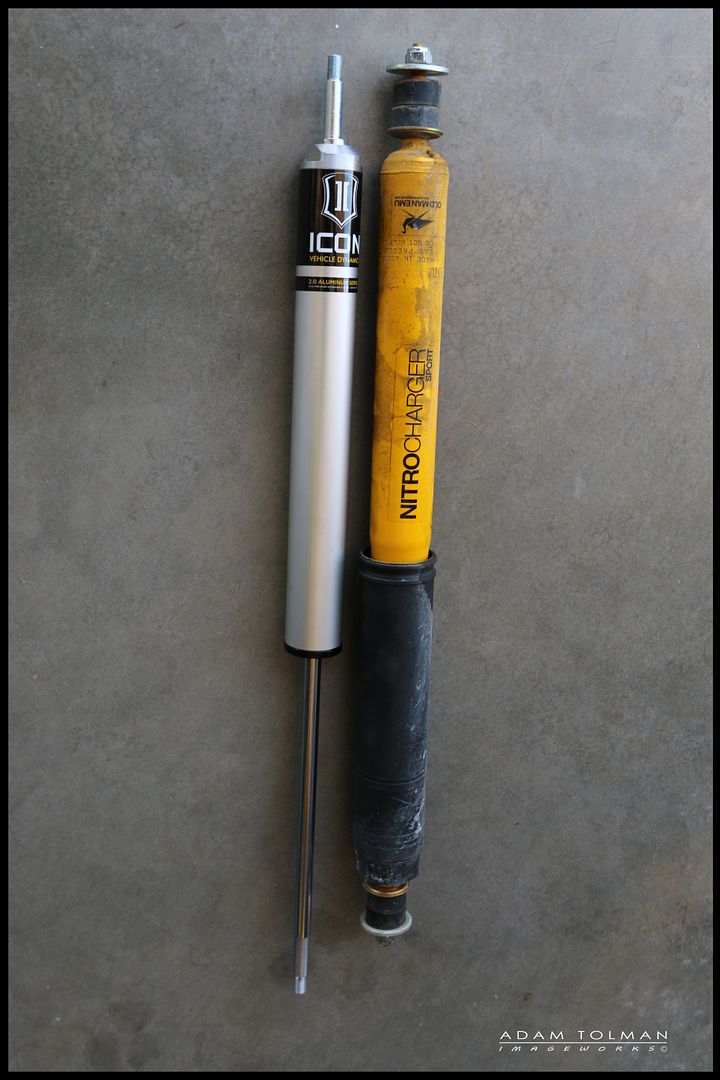
Stage1 Slinky at full droop
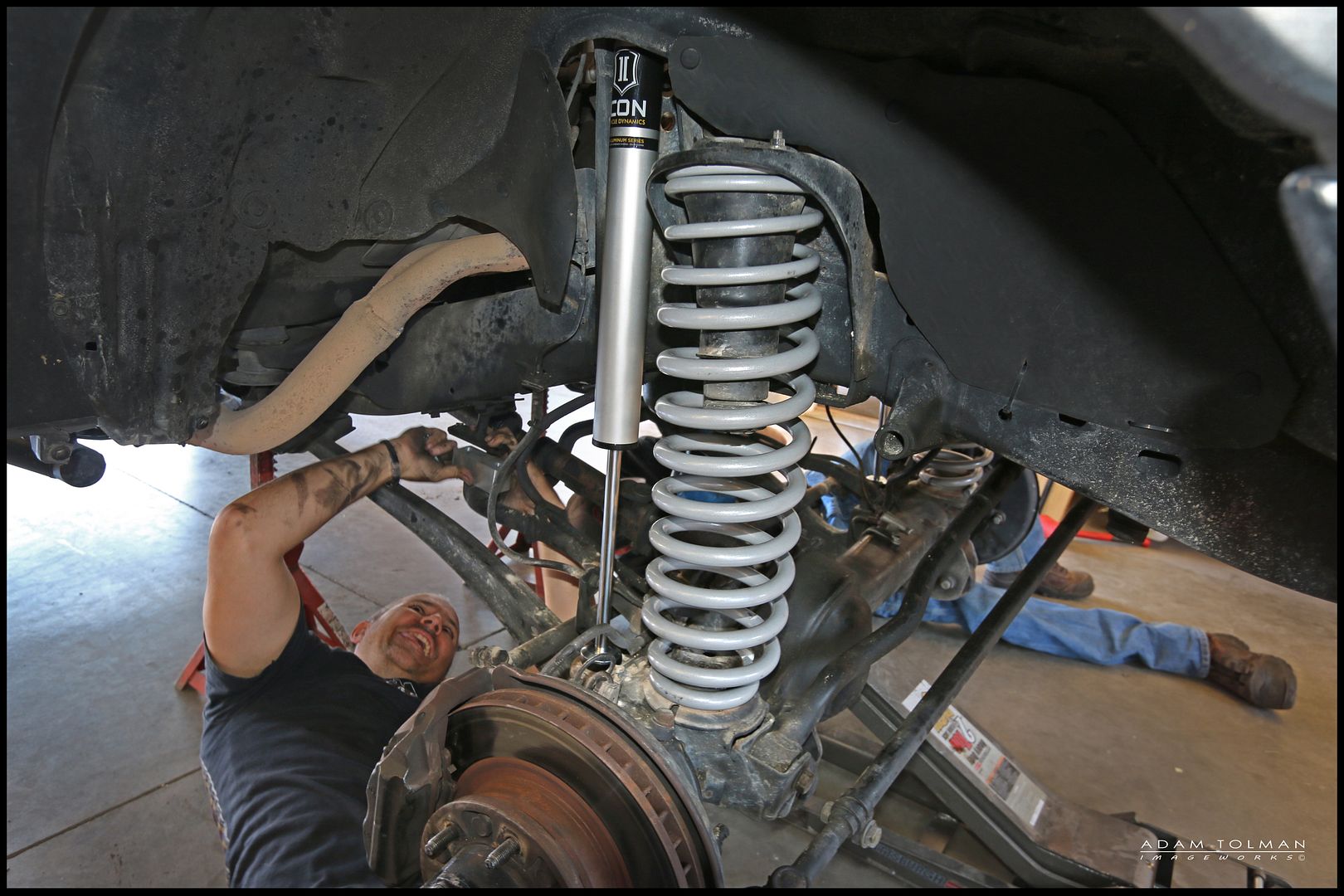
Stage 1 Slinky (rear) vs OME L (old style)
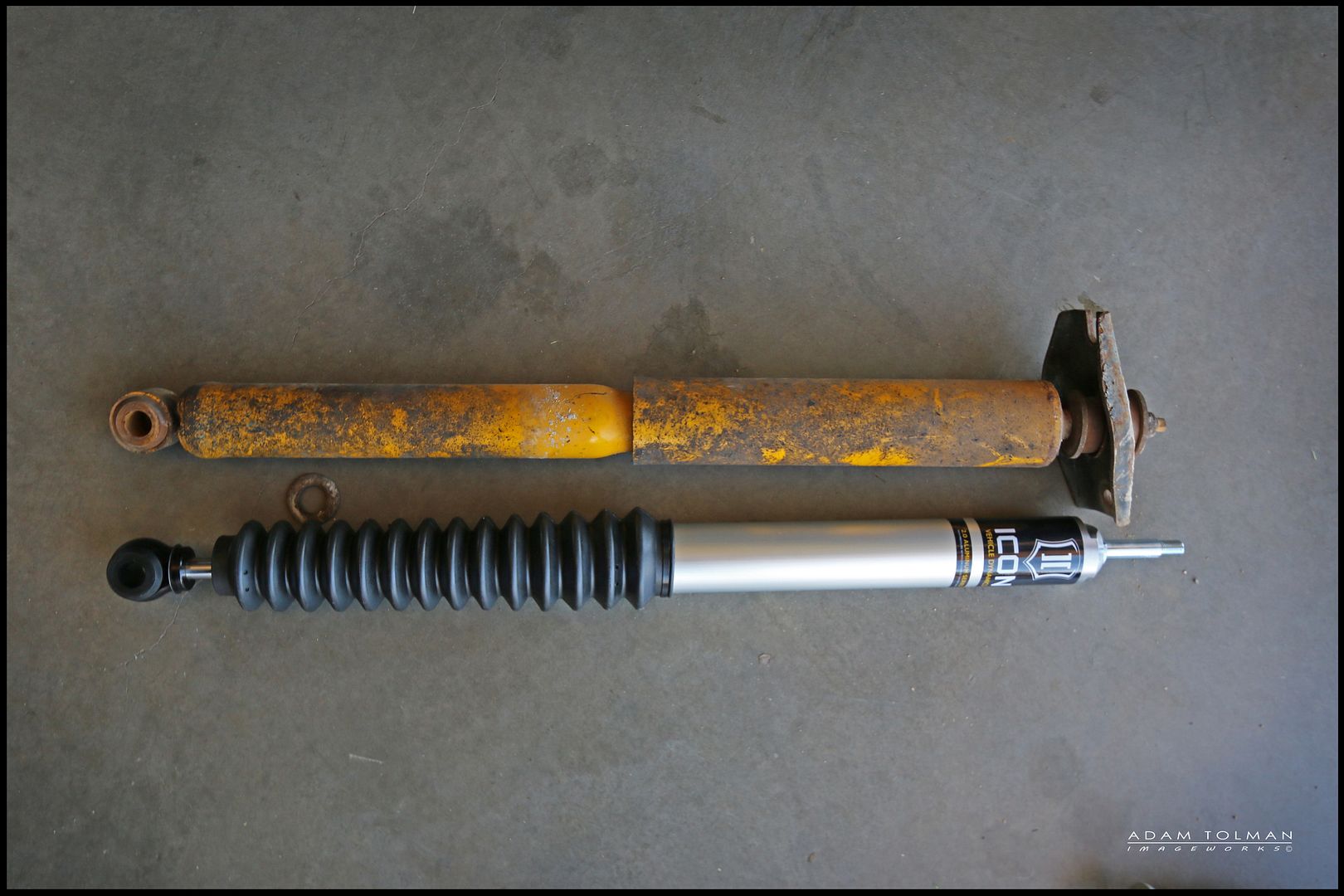
Stage1 stone guards for rear shocks
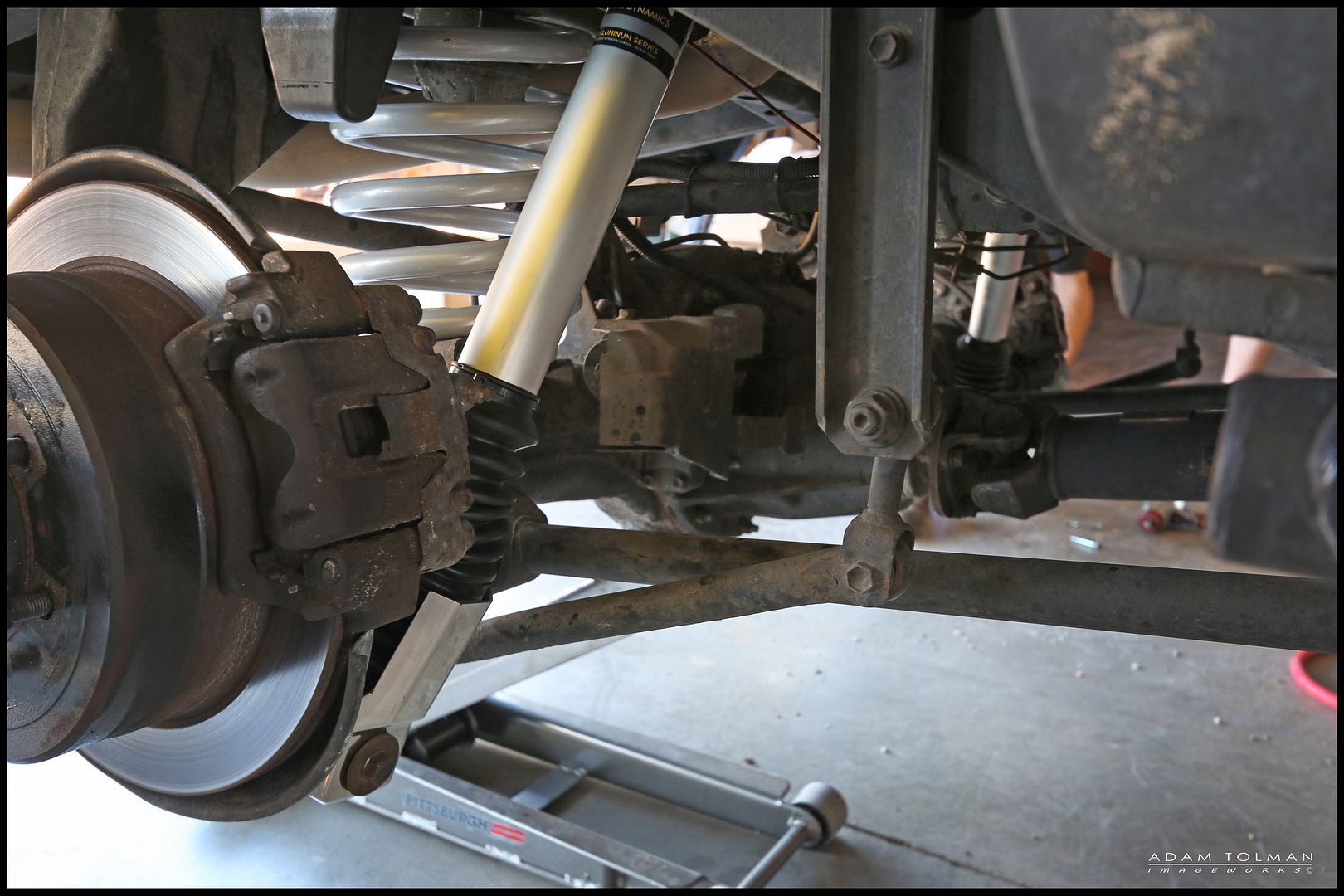
Stage1 Slinky 75mm HD at ride height. On my truck this measured out very close to a true 3" lift.
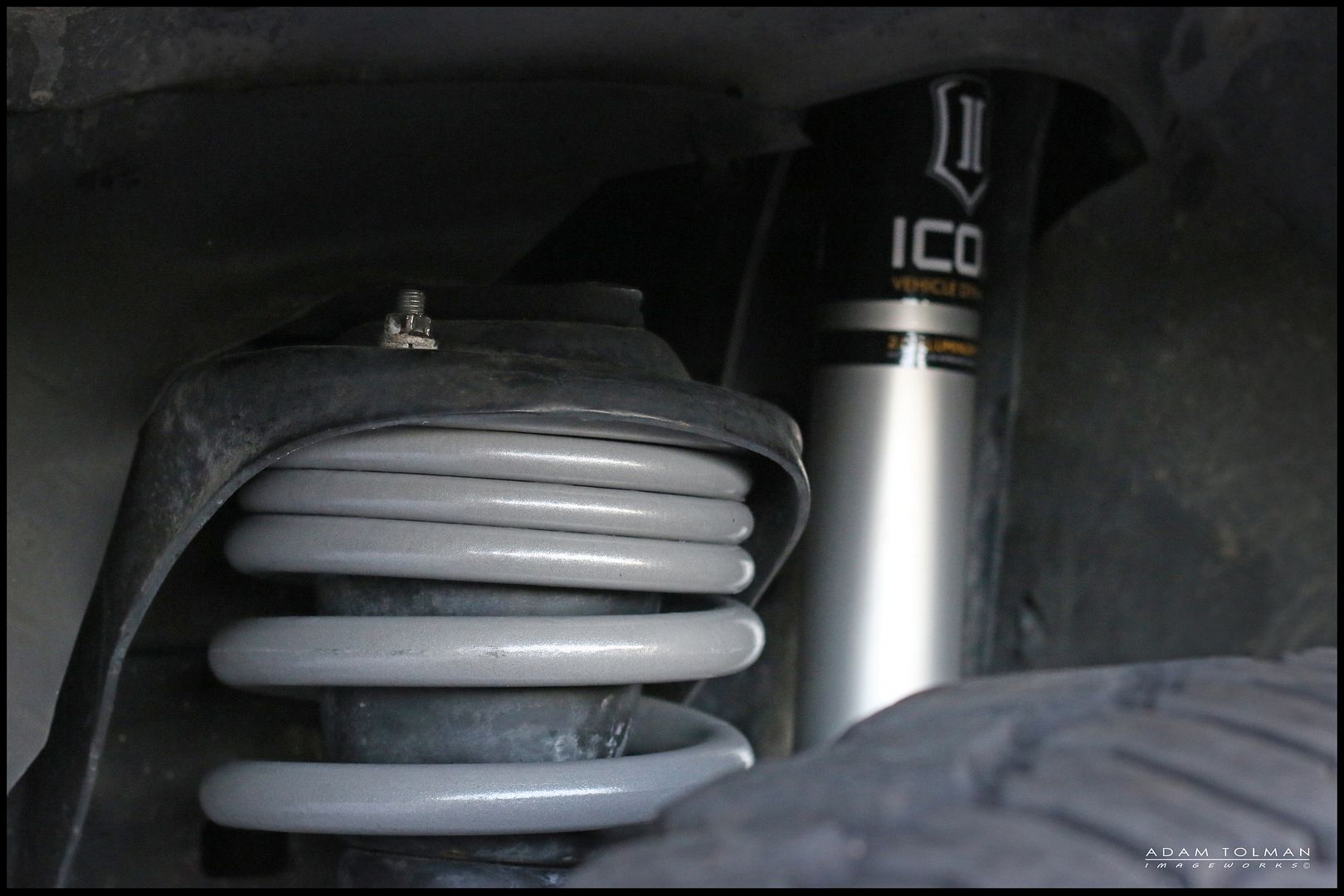

Box Rocket
SILVER Star
Some info on the Stage4 Slinky shocks. The Stage4 shocks are a 2.5 with remote reservoir and CDC (compression dampening control) adjustment with 8 stiffness settings. 12" travel. Fronts have a true remote reservoir with bracket. Rears are a piggyback design reservoir. Rear shocks include shock boot and lower stone guards to protect shock shaft.
A number of things make the Stage 4 shocks unique and different from the Stage 1’s. First, it starts with a “flutter stack” in the valving to allow some movement of the shock shaft before full valving sets in. This provides a supple ride with a higher fast piston speed valving code.
Second, the Stage 4 shocks have adjustable Compression Dampening Control (“CDC”). The CDC secondary piston and valve stack stops the pintle style, restrictive “90 psi in the tires” feeling on sharp bumps when road driving and are typically less than half the line pressure of other adjustable shocks at fast piston speeds. There are 8 different adjustability settings. Changing the setting is a simple turn of a dial. Stage 1 shocks are the equivalent of a setting of 4 on the Stage 4 CDC adjustment dial. No tools are needed, so it’s easy to make changes and dial in your ride for different conditions or vehicle loads in a matter of seconds. Third, the Stage 4 Slinky shocks have a built in hydro bump zone at fast piston speed for when the piston goes past the top manifold.


Stage4 Slinky fronts




Stage4 Slinky rears





A number of things make the Stage 4 shocks unique and different from the Stage 1’s. First, it starts with a “flutter stack” in the valving to allow some movement of the shock shaft before full valving sets in. This provides a supple ride with a higher fast piston speed valving code.
Second, the Stage 4 shocks have adjustable Compression Dampening Control (“CDC”). The CDC secondary piston and valve stack stops the pintle style, restrictive “90 psi in the tires” feeling on sharp bumps when road driving and are typically less than half the line pressure of other adjustable shocks at fast piston speeds. There are 8 different adjustability settings. Changing the setting is a simple turn of a dial. Stage 1 shocks are the equivalent of a setting of 4 on the Stage 4 CDC adjustment dial. No tools are needed, so it’s easy to make changes and dial in your ride for different conditions or vehicle loads in a matter of seconds. Third, the Stage 4 Slinky shocks have a built in hydro bump zone at fast piston speed for when the piston goes past the top manifold.


Stage4 Slinky fronts




Stage4 Slinky rears





Box Rocket
SILVER Star
Tapage
Club 4X4 Panamá
awesome thread .. hard to compare coils and shocks .. it's pretty much about your personal preferences ..
Mdej3
SILVER Star
Good job bro
My point is, don’t go and try to order Dobinson “dual rate coils”. They don’t exist on the menu. But, “Tapered” coil are on dobinson’s menu. Simply a matter of semantics.Anybody have free height length specs on the 4” rear flexi?
This coil looks to be very close to the FOR Gen II that I run that are about 20” free height in the rear.
I run eye adapters and use a 10” travel Fox 2.0 remote res shock that is 26.10 extended, so adding about an inch for the eye adapter (only the upper end gets converted) that’s about 27” total extended length, or more or less the Dobinson 4” lift shock.
I don’t need the tapered coil for more droop as my design is set up specifically to not add a lot of travel the front can’t use.
@baldilocks I’m not much concerned with the marketing - if the coil has a dead wind stack, it’s a dual rate coil. If the tail is tapered, the the tapered part is progressive as diameter decreases.
As to whether one does something the other does not outside of total free length, I’ve never seen a compelling argument. It’s just been that the taper by it’s progressive nature has a longer transition zone and the coil may be subjected to less stress and it may provide more of an unloaded to fully loaded sweet spot.
But 80’s are heavy and I’m not sure about the real world differences - as you noted above, you tried both without a meaningful distinction and it’s about netting out suspension height.
In my experience, the front is really easy to dial on a dual rate coil, but the rear less so. I’ve always felt my FOR Gen II could have been just a bit stiffer in the rear. It was really good and perhaps a price to pay for the design, but that’s why I’m going to do the swap on that end and see.
The tapered coil has a greater constant load carry capacity (rate) than the Flexi coil which is all one diameter material end to end.
IIRC the FOR springs I saw in a photo of yours were a progressive style and the spring was wound using a wire of same diameter end to end.
Similar threads
- Replies
- 3
- Views
- 806




